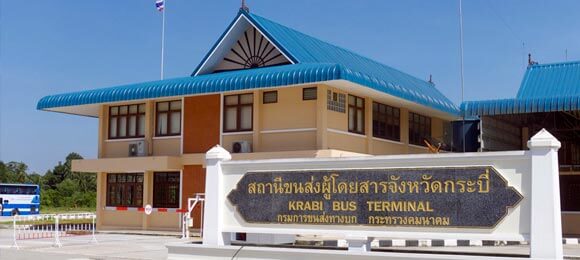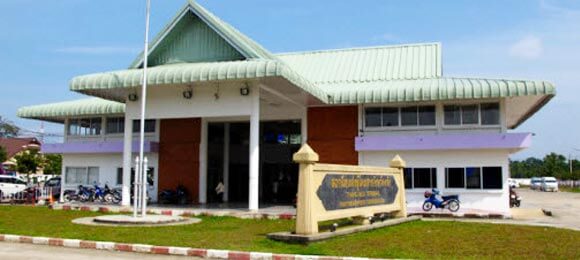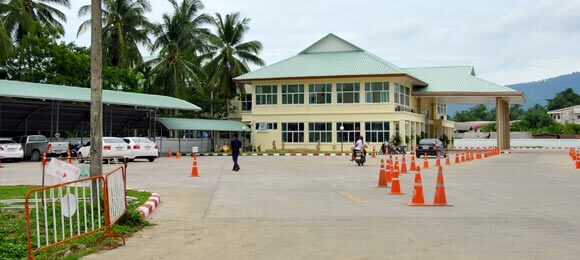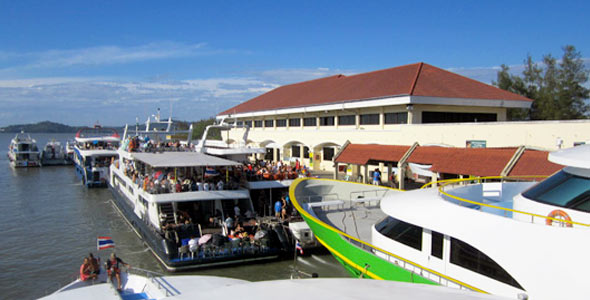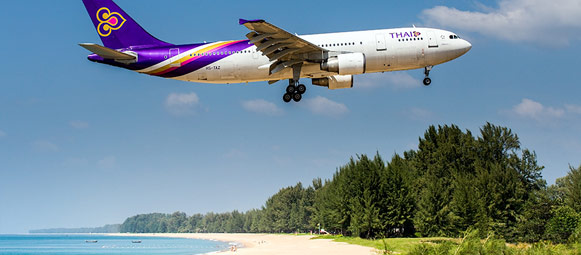 Diving in Phi Phi Islands
Diving in Phi Phi Islands
Mu Ko Phi Phi is a small archipelago of six islands into Andaman Sea, southern Thailand. The archipelago is located about 50 Km east of Phuket Island and 40 Km west of Krabi's mainland, which they are part administratively. Phi Phi Don, with an area of 28 square kilometres is the largest island of the group and the only one with inhabitants, hotels and resorts. The island is a real tropical paradise with a landscape that includes high green hills and towering cliffs overlooking beautiful white sand beaches surrounded by pristine coral reefs. The second largest island, Phi Phi Leh is uninhabited however universally known thanks to its stunning Maya Bay, considered among the 10 most beautiful beaches in the world. The rest of the islands in the archipelago, which includes Bida Nok, Bida Nai, Koh Mai Phai aka Bamboo Island and Koh Yung aka Mosquito Island, are little more of white sandy strips or limestone rocks jutting out of the sea. The entire archipelago is part of the Hat Noppharat Thara-Mu Ko Phi Phi National Park, a real must destination for diving and snorkelling.Read More
 Features of Sites and Diving Season
Features of Sites and Diving Season
The group of stunning Phi Phi Islands offers excellent possibilities to diving all year round. There are more than twenty-five dive sites around Phi Phi Don, suitable both to beginners and more experienced divers. Diving in these clear waters, between majestic limestone cliffs is a unique experience, with a nature that will charm even under the sea surface. Here you will find some of the best dive sites in Thailand, like the two small famous islands of Bida Nok and Bida Nai, and you’ll also have the best chance to swim among Turtles, Black Fin Sharks and Leopard Sharks. In all your diving in Phi Phi Islands you will find crystal clear water with excellent visibility, fantastic drop-offs, sloped reefs and limestone pinnacles covered by hard and soft corals and colourful anemones. It is possible to dive in Phi Phi Islands all year round, however in the south of Andaman Sea, where lies the archipelago, the best conditions to diving exist from November to April, when the surface conditions are generally calm. Visibility during this period can easily reach over 25 metres and the water temperature is between 28°C and 31° C. From late May to October, the monsoon winds swell the surface of the Andaman Sea reducing the visibility of more than 30% making the offshore sites inaccessible for long periods.Read More
Koh Phi Phi Diving Highlights by Poggus
Dinamic Map
 Access to dive sites and Scuba Centres
Access to dive sites and Scuba Centres
Phi Phi Don is a good base to dive in the whole area. There are many Scuba Centres and Diving Schools in Tonsai Village that organize day trips or multi-day cruises with living on board. The cost of a one day tour ranges from 2,500 to 4,500 THB, depends on the number of dives planned throughout the day, usually 2 or 3, and the selected sites. Daytrip prices normally include the roundtrip by dive boat from Tonsai, 2 or 3 dives, weights and weight-belts, tanks, lunch buffet, tropical fruit, drinking water, assistance by dive guides and insurance; are excluded personal diving gear and Nitrox.
Usually the dive boats depart at 07:30 - 08.00 a.m.; the return is at 15.00 in the case of day trip which provides 2 dives, or at 17.30 in the case of 3 dives. Multi-day cruises with living on board usually last two or three days, provide 3 or 4 dives per day in the sites close to Phi Phi and some of these also a day of diving in farthest Koh Racha Noi, 33 Km south of Phuket and about 65 Km from Phi Phi Don. The costs depend on the chosen boat, by diving equipment and services on board, indicatively ranging from 6,000 to 8,000 THB per day per person. The price includes accommodation in cabins, tanks, weights and weight-belts, assistance by dive guides, insurance and all meals on board; are excluded personal diving gear and Nitrox.

 Phi Phi's most famous Dive Sites
Phi Phi's most famous Dive Sites
Koh Bida Nok
Koh Bida Nok & Koh Bida Nai are the southernmost islets of the Phi Phi archipelago. The islands are just two limestone rocks jutting from the turquoise-blue sea of Andaman Sea, about 1.5 Km south of Phi Phi Leh. Under protection of Hat Noppharat Thara-Mu Ko Phi Phi National Park, the islands offer exciting diving opportunities with sloping rocky walls covered by colourful coral gardens and an abundance of marine life. Koh Bida Nok, which means ‘Outer Father’ in Thai, is the larger of the two and it is suitable to all level of diver. The small islet is stunning both above and below the water, and is regarded as Phi Phi's best diving. Usually divers begin exploring the underwater of Koh Bida Nok from the eastern side of the island and then swim to the south around the rock. The south-western side of rock islet is where you'll find the most beautiful coral and rock formations. The limestone cliffs descend dramatically into the sea and are covered with soft corals and purple, green, blue and pink anemones. The reef is rich also of sea fans, sea whips, giant brain corals, table corals and bubble coral. Here are also some caves and a lot of crevices that provide shelter to Lionfish, Scorpionfish, Sea Snakes all types of Moray Eel, the most common being the White-eyed Moray. The northern side of Koh Bida Nok is characterized by a sloping rocky wall covered by gorgonian sea fans, hard and soft corals shelters of Parrotfish and giant Clams. Halfway to the bottom is a deep cave, which can be explored only by experienced divers with knowledge in cave diving techniques. In Bida Nok the marine life is spectacular around all limestone sheer cliffs, with constant sightings of Turtles, Black Tip Reef Sharks, huge shoals of Snappers, and, although not regular visitors, Whale Sharks and Mantas. On the sandy bottom you will find Groupers, Zebra Sharks, Stingrays and, the ever-present, Leopard Sharks.Read More
Site Features
- Access from Phi Phi Don: Day trips or liveaboards
- Distance from Tonsai Bay: 22 Kilometres, one hour boat ride
- Water Temperature: Between 28-31° C
- Surface Conditions: Calm to slightly choppy, can be rough in monsoon season
- Current: Moderate to strong
- Diving Depth: Between 12-32 metres
- Visibility: Ranges from good to excellent between 15-30 metres
- Experience Level: Suitable to experienced divers, beginners should dive with a Divemaster
Diving in Bida Nok by pierredevers
Koh Bida Nai
Koh Bida Nai is like its larger sister island, Bida Nok, just a limestone cliff islet with similar characteristics above and below the sea surface and, together with its twin, is regarded as one of Phi Phi's best dive sites. Koh Bida Nai, which means ‘Inner Father’ in Thai, offers memorable diving experiences, with colourful steep walls, pretty coral gardens and an abundance of marine life. Unlike its twin, Koh Bida Nai can also be visited by snorkellers as its eastern side is shallow enough to enjoy this activity. Here you will swim between Harlequin-ghost Pipefish, Needlefish, Seahorses, Black Tip Reef Sharks and huge shoals of Snappers and Barracuda. You will explore the hard and soft corals, anemones and gorgonian sea fans, including hides the voracious Lionfish. There's also a huge variety of invertebrates, such as Octopus, Cuttlefish, Squid, Shrimps, Crabs and giant Clams. Scorpionfish are often seen camouflaged on the sandy bottom where rest many Leopard Sharks. These docile sharks reach a maximum of 2 metres and a half in length, are nocturnal, and they sleep all day on the sandy bottom at the edge of the reef.Read More
Bida Nai Diving by dmaestro3
Site Features
- Access from Phi Phi Don: Day trips or liveaboards
- Distance from Tonsai Bay: 10 Kilometres, 40-minute boat ride
- Water Temperature: Between 28-31° C
- Surface Conditions: Calm to slightly choppy, can be rough in monsoon season
- Current: Mild to moderate
- Diving Depth: Between 5-30 metres
- Visibility: Ranges from good to excellent between 10-25 metres
- Experience Level: Suitable for all levels of divers and good for snorkelling
Hin Bida
Hin Bida is a small rocky outcrop that just protrudes above the sea surface, about 6 Km south of Koh Bida Nok. This dive site is otherwise known as "Phi Phi Shark Point", because of the numerous sightings of Leopard Sharks, but do not be confused with the more well-known Shark Point, Hin Musang, which is located between the Phi Phi Islands and Phuket. The rock breaks the water only at low tide and then drops to the sea bottom at about 22 metres. The surface of the limestone reef is covered with soft and hard corals, stag horn corals, gorgonian sea fans and anemones as well as it is full of marine life. Closer to the reef or hidden among the corals and anemones you'll see Parrotfish, Angelfish, Lobsters, Shrimps, Clownfish, Cuttlefish, Octopus, Squid or predators as Lionfish and Moray Eels. Out in open sea, there are large shoals of Barracuda and Snappers. Attracted by so much marine life, on the seabed are residents Nurse and Reef Sharks, as well a lot of Leopard Sharks. Hin Bida offers also some chance of seeing Manta Ray or even a Whale Shark, likely between February and March.Read More
Site Features
- Access from Phi Phi Don: Day trips or liveaboards
- Distance from Tonsai Bay: 16 Kilometres, one hour boat ride
- Water Temperature: Between 28-31° C
- Surface Conditions: Calm to slightly choppy, can be rough in monsoon season
- Current: Mild to moderate, can be strong
- Diving Depth: Between 5-21 metres
- Visibility: Ranges from good to excellent between 15-20 metres
- Experience Level: Suitable to experienced divers, beginners should dive with a Divemaster
Leopard Sharks in Hin Bida by Kiwidiver
Maya Bay
Phi Phi Leh is the second largest island of Phi Phi archipelago, about 2 km south from the southernmost tip of Phi Phi Don. The small island is universally known thanks to its stunning Maya Bay, considered among the 10 most beautiful beaches in the world. The view you get when you cross the access by sea is breathtaking. Maya Bay is a stunning enclosed bay sheltered by 100-metre high cliffs on three sides, a natural amphitheatre that is unmatched on the face of the earth. The underwater world offers a wonderful view of colorful corals and tropical fish that swim in a turquoise crystal water, all the bay is in fact a large stunning reef. Maya Bay is the ideal destination to for all levels of divers and snorkellers with multiple dive locations depending on experience. The interior of the bay is a popular snorkelling spot, but it is great dive site for beginners, less experienced divers and even for dive training. Inside the bay the average depth is 8-10 metres and its maximum depth is only 18 metres, nevertheless offers a wide variety of marine life. The limestone rocks which circle the bay are full of cracks and crevices that provide shelter to many tropical fish and a huge variety of invertebrates, such as Octopus, Shrimps and Crabs. There are also some small caverns to explore. For the more experienced diver, Maya Bay gets more interesting once you get outside it. Immediately outside the access between the limestone cliffs the depth goes down to over 30 metres. Here are dramatic rock formations, sloping reefs, large caves and deep channels. The steep walls to the north and south of the entrance offer a good chance to find Black Tip Reef Sharks, Leopard Sharks and Turtles.Read More
Phi Phi Islands Scuba Diving with Blue View Divers
Site Features
- Access from Phi Phi Don: Day trips or liveaboards
- Distance from Tonsai Bay: 7 Kilometres, 30-minute boat ride
- Water Temperature: Between 28-31° C
- Surface Conditions: Calm, can be slightly choppy in monsoon season
- Current: Gentle to mild
- Diving Depth: Between 8-32 metres
- Visibility: Ranges from good to excellent between 10-20 metres
- Experience Level: Suitable for all levels of divers and good for snorkelling
Loh Samah Bay
Loh Samah Bay is on the east side of Phi Phi Leh opposite to Maya Bay, and separated only by a thin limestone wall with a small hole which cuts through the rock making it possible to walk through. The interior of the bay is characterized by shallow water, between 2 and 12 metres, suitable for novice divers and snorkellers, often used for night dives. The sea bottom is covered by a garden of hard corals and colourful anemones. The most interesting point of dive is around a small limestone islet that is located within the bay. To reach it divers swim through a narrow canyon from inside the bay. The canyon is about 15 metres deep covered with soft corals and gorgonian sea fans, which serve as shelter or hiding place to Seahorses, Moray Eels, Cuttlefish, Octopus, Pipefish, Needlefish and Lionfish. The steep walls of islet descend to around 20 metres on the side furthest away from Phi Phi Leh. Loh Samah Bay is usually included as a Night Dive site for many liveaboards, this is because the bay is sheltered and it’s a great place to see bioluminescent algae.Read More
Site Features
- Access from Phi Phi Don: Day trips or liveaboards
- Distance from Tonsai Bay: 7 Kilometres, 30-minute boat ride
- Water Temperature: Between 28-31° C
- Surface Conditions: Calm, can be slightly choppy in monsoon season
- Current: Gentle to mild
- Diving Depth: Between 5-20 metres
- Visibility: Ranges from good to excellent between 10-20 metres
- Experience Level: Suitable for all levels of divers and good for snorkelling
Diving in Phi Phi Leh by Kiwidiver
Hin Phae
Hin Phae is a stunning coral reef just in front of Long Beach in south of Phi Phi Don. The reef is a 10-minute boat ride from Tonsai Bay, but also it can be reached directly from the shore of Long Beach. Hin Phae is one of the best places for snorkelling in Phi Phi Don, but it is also a great dive site for beginners or less experienced divers. The depth is between 2 and 16 metres and the currents are in practice non-existent. The reef consists in large boulders with many holes and tunnels, covered by soft and hard coral teeming with marine life. Here, even snorkellers have the opportunity to see Black Tip Reef Sharks as well as Lobsters, Groupers, Snappers, Angelfish and Morays Eels. Black-tip Reef Sharks. The soft and hard coral provide shelter to Clownfish, Parrotfish, Bannerfish, Crabs, Surgeonfish and Butterflyfish.Read More
Diving in Koh Phi Phi by Laurens Maarschalkerweerd
Site Features
- Access from Phi Phi Don: By boat & from shore
- Distance from Tonsai Bay: 2 Kilometres, 10-minute boat ride
- Water Temperature: Between 28-31° C
- Surface Conditions: Calm, can be choppy in monsoon season
- Current: Gentle
- Diving Depth: Between 2-16 metres
- Visibility: Ranges from good to excellent between 7-15 metres
- Experience Level: Suitable for all levels of divers and good for snorkelling
Hin Dot
Hin Dot, also known as Chimney Rock is an interesting dive site just 4 Km southwest of Tonsai Bay in Phi Phi Don. The site is characterized by three submerged pinnacles, or chimneys, which lie close together in a north-south direction. The deepest one rises up only to 16 metres below the sea surface. The main pinnacle starts just below sea level and then drops to around 30 metres depth. It has distinct shelves at three, twelve and fifteen metres, making it a great multilevel dive. These impressive towers are famous for the presence of large shoals of fish including Snappers and Yellow Fusiliers or larger fish such as Groupers, Trevally and Barracuda, which swimming in circles feeding on smaller baitfish. The pinnacles are covered by purple and orange soft corals with tube corals, hard corals, tubeworms and anemones. The rock surface is teeming of marine life. Between cracks and crevices are Shrimps, small Lobsters, Crabs, Zigzag Clams and Oysters. Clownfish dance above the anemones; Nubibranchs, Cuttlefish and Squid are easy to spot here, as well as the voracious Pufferfish, Lionfish, and Bearded Scorpionfish. On the bottom of the sea, between sand and scattered rocks are frequent sightings of Nurse and Leopard Sharks.Read More
Site Features
- Access from Phi Phi Don: Day trips or liveaboards
- Distance from Tonsai Bay: 4 Kilometres, 20-minute boat ride
- Water Temperature: Between 28-31° C
- Surface Conditions: Calm to moderate, can be choppy in monsoon season
- Current: Moderate, can be strong
- Diving Depth: Between 5-30 metres
- Visibility: Ranges from discrete to good between 10-15 metres
- Experience Level: Suitable to experienced divers and beginners
Phi Phi Island Scuba Diving by Phuket Dive Tours
Garang Heng
Garang Heng is a small circular reef just 2 Km east of Phi Phi Leh. The coral reef is submerged and, therefore, is not visible from the surface. Feature of this site are the four pinnacles which start just 6m below the sea level and dropping down to about 24 metres. The huge towers are famous to the presence of large shoals of Yellowtail Barracuda, Putterfish, Squid, Groupers, Fusiliers and Blue-lined Snappers. On the seabed there are Bamboo Sharks, Nurse Sharks and numerous Leopard Sharks. The surface of the reef consists of soft and hard corals, barrel sponges, and lots of gorgonian sea fans and anemones. This is a perfect habitat for Glassfish and other young fish, which it is why you will see so many other predators here, such as Lionfish, Scorpionfish and Moray Eels. It is an easy and interesting dive site with mild currents although not very popular, due most dive companies don’t go there for lack of a GPS.Read More
Diving with a Whale Shark by Scuba Diving Tours Phuket
Site Features
- Access from Phi Phi Don: Day trips or liveaboards
- Distance from Tonsai Bay: 10 Kilometres, 40-minute boat ride
- Water Temperature: Between 28-30° C
- Surface Conditions: Calm, can be choppy in monsoon season
- Current: Moderate
- Diving Depth: Between 5-24 metres
- Visibility: Ranges from good to excellent between 10-20 metres
- Experience Level: Suitable to experienced divers and beginners
King Cruises Wreck
King Cruises Wreck is a ferry sank May 4, 1997 hitting Anemone Reef in perfect weather conditions. The ferry was quite large, 85 metres long by 25 metres wide with 4 decks; it was originally a car and passenger ferry in Kobe, Japan. There were over 500 people on board when it sank, but no lives were lost and now it has become one of the most popular dive sites around Phuket. The wreck is resting on the bottom at a depth of 32 metres. It lies in an upright position sufficiently intact, as if it were still in navigation, with the captain's cabin the shallowest area at 12 metres deep. The wreck with its multiple decks, the spacious open areas and window holes allows easy access to the interior. However, the depth and the frequent strong currents make the dive unsuitable for beginners. In August 2003, the floor of the upper deck collapsed through the main deck; more recently both the trunk and the bow areas have deteriorated significantly, so the penetration is no longer safe. King Cruiser is providing sheltered living quarters for large numbers of fish and crabs. The interior of the wreck is home of some Lionfish, the largest quietly swimming in the toilet area at the rear of the main deck. A Nurse Shark, a large Barracuda and a Hawksbill Turtle are permanent residents into the wreck. The 4 decks are home to literally hundreds of Scorpion Fish, be careful because they are perfectly camouflaged with the rusty steel. There are huge shoals of fish around the whole wreck, including Surgeonfish, Kingfish, Yellowtail Barracuda, Mackerel, Giant Trevally and other pelagic fish.Read More
Site Features
- Access from Phi Phi Don: Day trips or liveaboard cruises
- Distance from Tonsai Bay: 22 Kilometres, one hour boat ride
- Water Temperature: Between 27-30° C
- Surface Conditions: Calm to slightly choppy, can be rough in monsoon season
- Current: Moderate to strong
- Diving Depth: Between 12-32 metres
- Visibility: Ranges from good to excellent between 15-30 metres
- Experience Level: Suitable to experienced divers, beginners should dive with a Divemaster
King Cruiser Wreck by Aussie Divers Phuket
Anemone Reef
Anemone Reef is one of the best dive sites on the Andaman Sea, not so far from Phi Phi Don. The site consists in a stunning submerged pinnacle. The pinnacle is known by the locals as Hin Jom which means Submerged Rock in Thai. Its top is five metres below the sea surface which goes down to 25 metres with a sloped channel at the south. The west side dives down to a sandy bottom, while the east side is a steep wall. Anemone Reef derives its name from the numerous lime green and sky blue anemones that cover the entire pinnacle. The superb forest of colourful anemones is main attraction of this site, a great opportunity for underwater photography. At Anemone Reef the dive begins with a free descent to the top of the pinnacle which is at about 5 metres down. Upon arriving on the underwater summit you can see the beautiful anemones that cover the rock and provide shelter to numerous Clownfish. The descent to the bottom usually goes in circles around the pinnacle; if the currents make it difficult to circumnavigate the reef the descent continues on a zigzag up one side of the pinnacle. During the descent to the sandy bottom you can be admired stunning lemon sea fans, lime green and sky blue anemones. All along the pinnacle the marine life is prolific and including Cuttlefish, Seahorses, Sea Snakes, Anemonefish, Pipefish, Clownfish, Butterflyfish, Trumpetfish, Cornetfish and Parrotfish. About 7 metres down on the eastern slope of the pinnacle there is a little cave, about 1 metre high, and inside there are Jans's Pipefish, Durban Dancer and Coral-banded cleaner Shrimps. On the sandy bottom you may find Groupers, Moray Eels, Leopard Sharks and occasionally Turtles, Grey Reef Shark and rare Zebra Moray. In the surrounding waters swim large shoals of pelagic fish, such as various families of Snappers, Soldierfish and Fusiliers. Into the deep blue are also reported sightings of Whale Shark, less frequent than other sites but still possible in the right season.Read More
Diving at Anemone Reef with Phuket Dive Tours
Site Features
- Access from Phi Phi Don: Day trips or liveaboard cruises
- Distance from Tonsai Bay: 22 Kilometres, one hour boat ride
- Water Temperature: Between 27-31° C
- Surface Conditions: Calm to slightly choppy, can be rough in monsoon season
- Current: Moderate, can be strong
- Diving Depth: Between 5-25 metres
- Visibility: Ranges from good to excellent between 15-25 metres
- Experience Level: Suitable for all levels of divers
Hin Musang aka Shark Point
Hin Musang, best known by divers as Shark Point, is one of the best scuba diving spots around Phi Phi Islands. Shark Point is located about 20 Km north of Phi Phi Islands. The site is very close to two other famous dive sites: King Cruiser Wreck and Anemone Reef. Hin Musang, which in Thai means precisely shark rock, derives its name from the frequent sightings of docile Leopard Sharks resting on the sandy bottom. Shark Point is made up of 3 huge limestone pinnacles at different depths. Pinnacles are aligned in the direction north to south, with the northern-most known as Pinnacle 1 and the southern-most as Pinnacle 3. Pinnacle 1 is the largest and the only one visible from the sea surface. The main attraction of site, in addition to sharks and vast shoals of tropical fish are the pink and purple soft corals, the gorgonian sea fans as well as the numerous barrel sponges that decorate these huge pinnacles. Shark Point offers therefore great opportunity for underwater photography. Along the slopes of the pinnacles, the marine life is really great with all the reef life of the Andaman Sea, such as Cuttlefish, Lionfish, Scorpionfish, Tiger-tailed Seahorses, Blue-ringed Angelfish, Pufferfish, Durban Dancer, Zebra Moray Eels, White-eyed Moray Eels, Shrimps and many different types of Pipefish. shoals of Fusiliers, Barracuda and Tuna swim all around the reef, as well as Grey Sharks and White Fin Sharks. It is also reported rare sightings of Whale Shark and Turtles. On the seabed at the base of the pinnacles are residents the Leopard Sharks. These docile sharks reach a maximum of 2 metres and a half in length, are nocturnal, and they sleep all day on the sandy bottom at the edge of the reef. Near the bottom, Bamboo Sharks can also be found hiding under coral ledges.Read More
Site Features
- Access from Pho Phi Don: Day trips or liveaboard cruises
- Distance from Tonsai Bay: 20 Kilometres, one hour boat ride
- Water Temperature: Between 27-31° C
- Surface Conditions: Calm to slightly choppy, can be rough in monsoon season
- Current: Moderate, often strong
- Diving Depth: Between 10-25 metres
- Visibility: Ranges from good to excellent between 10-25 metres
- Experience Level: Suitable to experienced divers, beginners accompanied by a Divemaster
Diving at Hin Musang with Merlin Divers Phuket
Koh Racha Noi
Koh Racha Yai and Koh Racha Noi are twin islands located 20-30 km south of the southern tip of Phuket. Koh Racha Noi is the smaller, just a long thin strip of granite rock uninhabited covered with forest, but it is one of the best locations in the area for game fishing and experienced scuba divers. Surrounded by hard coral reef, with huge granite boulders descending to depth at the north and south points, Racha Noi's waters offer the best visibility of all diving sites around Phuket. On the northern tip of Racha Noi are two beautiful little bays well-known for their deep clear water and colourful coral formations which providing ample opportunities for both snorkelling and scuba diving. At Northern Point there are some of the healthiest coral formations in Thailand. The descent to 13 metres is undemanding, like swimming in a natural pool toward the sandy seabed. On the bottom are large patches of green sheet corals, porites and bottle-brush corals. Moving to the eastern edge of the bay are large boulders covered by hard coral. Marine life here includes Clownfish, Parrotfish, Cuttlefish, Lobster, Squid, Crabs and Octopus.The southern tip of Racha Noi is suitable to experienced divers, but it offers the best chance to see Mantas Ray and Whale Shark around Phuket and Phi Phi Islands. At South Point the dive begins with a free descent to 18 metres along sloping reef; at end you'll find yourself on great rock formation, large boulders and pinnacles, with hard and soft corals surrounded by large shoals of colourful tropical fish. The marine life here also offers sightings of Black Fin Sharks, Leopard Sharks and Barracuda and other pelagic fish.Read More
Koh Racha Noi Diving with Phuket Dive Tours
Site Features
- Access from Phi Phi Islands: Day trips or liveaboard cruises
- Distance from Tonsai Bay: 65 Kilometres, two hours boat ride
- Water Temperature: Between 27-31° C
- Surface Conditions: Calm to slightly choppy, can be rough in monsoon season
- Current: Can be strong
- Diving Depth: Between 10-40 metres
- Visibility: Ranges from good to excellent between 20-30 metres
- Experience Level: Suitable to experienced divers, beginners should dive with a Divemaster
We Sugest
Find the best Hotel in Phi Phi Island at "Lowest Price"
Find cheapest airfare to Thailand
Useful Piers & Ferry Schedules
Useful airports







